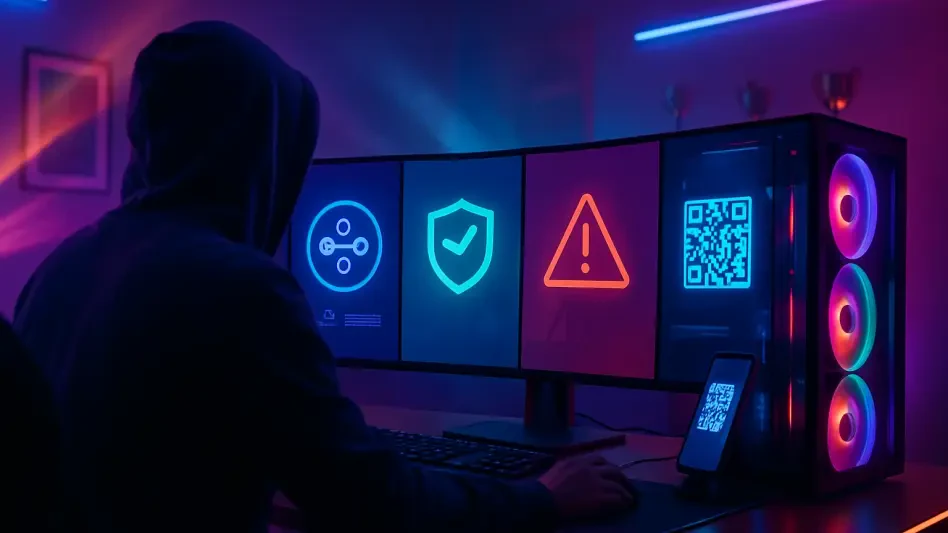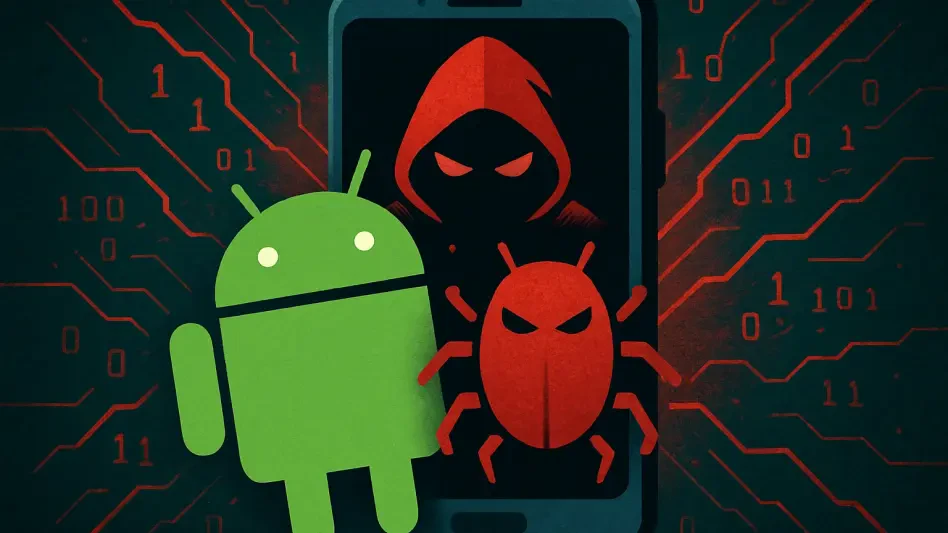Imagine a typical classroom in a UK school where a curious teenager, armed with nothing more than a laptop and a knack for problem-solving, manages to access sensitive data of thousands of peers. This isn’t a far-fetched scenario but a growing reality that has caught the attention of regulators, educators, and cybersecurity experts alike. With students increasingly behind data breaches in educational settings, this roundup dives into diverse perspectives on why these incidents are happening, the systemic issues at play, and actionable strategies to address them. By gathering insights from various industry leaders, educators, and regulatory bodies, the goal is to shed light on this pressing issue and explore how to transform youthful curiosity into a force for good.
Uncovering the Trend of Student-Driven Cyber Incidents
The alarming rise of student-led data breaches in UK schools has become a focal point for discussion across multiple sectors. Reports analyzing over 200 breach incidents from recent years reveal that a staggering 57% of insider breaches in educational institutions are attributed to students. Often, these young individuals exploit simple vulnerabilities, such as weak passwords or unsecured login details, to gain unauthorized access to systems. This trend underscores not only the ingenuity of tech-savvy students but also the urgent need to understand their motivations and the risks they pose.
Differing views emerge on how to interpret these actions. Some cybersecurity professionals argue that many students are driven by a desire to test their skills rather than cause harm, viewing their exploits as a form of digital exploration. In contrast, regulatory perspectives emphasize the potential for such behavior to escalate into serious criminal activity if left unchecked, pointing to cases where students accessed data of over 1,400 peers or manipulated records affecting thousands. This divide in opinion sets the stage for a broader debate on whether punitive measures or supportive interventions are the better path forward.
A third angle comes from educators who highlight the role of environment in shaping student behavior. They note that schools often lack the resources or awareness to guide tech-curious youth toward positive outlets, leaving them to experiment in ways that can cross ethical lines. This insight suggests that addressing the issue requires more than just tighter security—it demands a cultural shift in how schools approach technology education. Together, these perspectives paint a complex picture of a problem that is as much about human behavior as it is about technical flaws.
Systemic Vulnerabilities and Shared Responsibility
Delving into the root causes of these breaches, a consensus forms around the systemic weaknesses within school infrastructures. Analysis shows that 23% of insider incidents stem from poor data protection practices, such as staff leaving devices unattended or granting unnecessary access. Additionally, 20% of breaches occur when employees send sensitive information to personal devices, while 17% are linked to improper system configurations. These statistics reveal a troubling reality: schools are often ill-equipped to safeguard data, inadvertently enabling student-led exploits.
Cybersecurity specialists stress that human error plays a significant role in these vulnerabilities, often outpacing even sophisticated hacking attempts. They argue that staff training on basic data protection protocols could significantly reduce risks, pointing to the need for regular workshops and clear guidelines. However, some IT consultants counter that training alone isn’t enough, advocating for investment in robust system designs that limit access by default and flag unusual activity. This divergence in focus—between human and technical solutions—highlights the multifaceted nature of securing school environments.
Meanwhile, school administrators offer a pragmatic viewpoint, acknowledging budget constraints as a barrier to implementing comprehensive security measures. Many express frustration over balancing educational priorities with cybersecurity needs, suggesting that government or private sector partnerships could provide the necessary funding and expertise. This collective input reveals a shared responsibility among stakeholders to address gaps, emphasizing that no single solution will suffice without coordinated effort across all levels of the education system.
From Curiosity to Consequence: The Long-Term Outlook
Decoding Student Motivations: Experimentation or Risk?
Understanding why students engage in data breaches is central to crafting effective responses. Industry analysts note that a majority of these incidents are fueled by curiosity, with students often seeking to challenge themselves by cracking systems or outsmarting security protocols. This drive to explore is seen by some as a natural extension of learning, albeit misdirected, with many young hackers unaware of the legal ramifications of their actions.
Regulatory bodies, however, raise a red flag about the potential trajectory of such behavior. Data indicating that one in five children aged 10 to 16 have participated in illegal online activities suggests a slippery slope toward more serious cybercrime. High-profile cases, such as teenagers manipulating data affecting thousands, are cited as evidence of the scale of damage possible even from seemingly innocent intentions. This perspective urges swift intervention to prevent a generation from veering into criminal paths.
Balancing these views, educational psychologists suggest that labeling all student hackers as potential criminals oversimplifies the issue. They argue that many are simply seeking validation or a sense of achievement, which schools could redirect through structured programs. This middle ground emphasizes the importance of distinguishing between curiosity and malice, advocating for tailored approaches that address individual motivations rather than applying blanket punishments.
Redirecting Talent: Opportunities Over Punishment
The idea of channeling student curiosity into positive avenues garners significant support from various quarters. Cybersecurity leaders propose that schools establish mentorship programs or clubs focused on ethical hacking and digital innovation, providing safe spaces for students to hone their skills. They point to successful initiatives in other regions where such efforts have turned potential offenders into industry contributors, highlighting the dual benefit of reducing breaches and addressing skill shortages.
In contrast, some traditional educators remain skeptical, arguing that emphasizing cybersecurity clubs might glamorize hacking and inadvertently encourage risky behavior. They advocate for stricter disciplinary measures to deter students, coupled with basic digital literacy courses that stress the consequences of data misuse. This cautious stance reflects a concern that without clear boundaries, well-meaning programs could backfire by normalizing boundary-pushing activities.
A hybrid viewpoint emerges from policy advisors who suggest integrating cybersecurity education into standard curricula while partnering with tech firms for real-world exposure. This approach aims to normalize ethical tech use from an early age, ensuring students see legitimate career paths in the field. The varied opinions converge on one key point: proactive guidance is essential to transform raw talent into a societal asset, though the best methods to achieve this remain under debate.
Practical Tips for Securing Schools and Supporting Students
For schools grappling with the immediate threat of data breaches, actionable advice comes from multiple sources. Cybersecurity consultants recommend implementing strong password policies, such as requiring complex combinations and regular updates, to thwart easy access attempts. They also stress the importance of securing devices and limiting data access to essential personnel only, addressing common lapses that students exploit with minimal effort.
Educators and IT staff are encouraged to undergo routine training on data protection, with experts suggesting annual refreshers to keep pace with evolving threats. Beyond internal measures, some advocate for external audits of school systems to identify and fix configuration flaws before they are exposed. These practical steps, while resource-intensive, are seen as critical to building a baseline of security that can withstand both intentional and accidental breaches.
On the student engagement front, recommendations include fostering constructive tech exploration through partnerships with local tech companies for workshops or internships. Curriculum developers also propose embedding cybersecurity ethics into lessons, ensuring young minds grasp the impact of their actions early on. These combined strategies aim to tackle both the technical and human elements of the issue, offering schools a roadmap to safer digital environments.
Reflecting on Insights and Charting the Next Steps
Looking back, the roundup of perspectives on student-led data breaches in UK schools paints a nuanced picture of a multifaceted challenge. Discussions ranged from dissecting the motivations behind student actions to exposing systemic flaws that enabled such incidents. The consensus among cybersecurity experts, educators, and regulators pointed to a critical need for both immediate security enhancements and long-term educational reforms.
Moving forward, schools and stakeholders are urged to prioritize robust data protection measures while investing in programs that guide tech-savvy youth toward ethical careers. Collaborative efforts between educational institutions, industry players, and government bodies emerged as a vital next step to bridge resource gaps and foster innovation. For those seeking deeper understanding, exploring resources on cybersecurity education and school data protection policies offers a valuable starting point to continue this important conversation.








